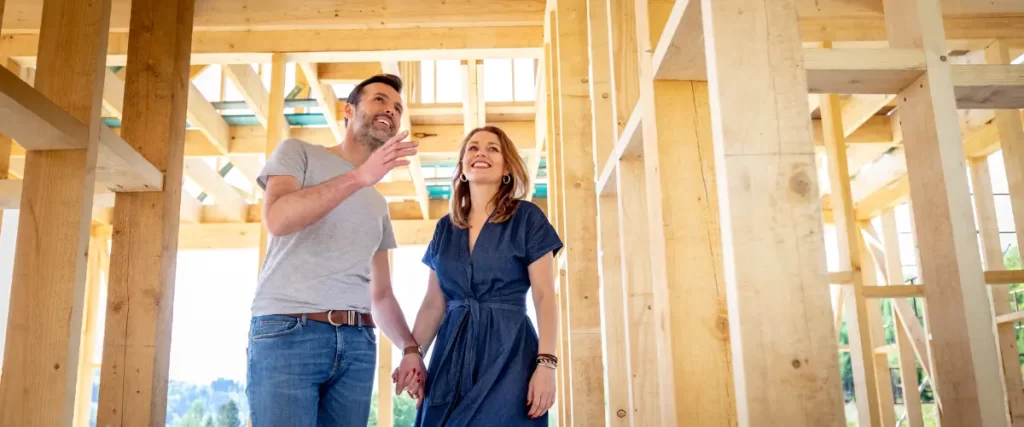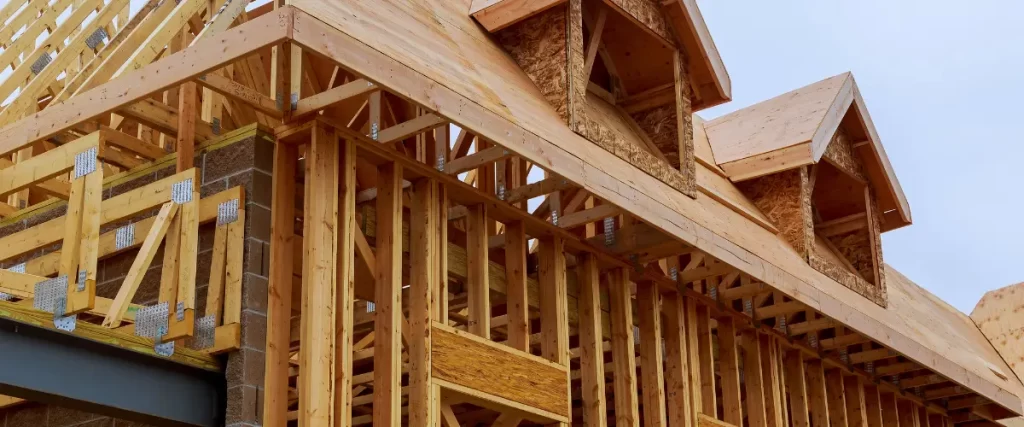Building your dream home in the Omaha Metro sounds pretty straightforward—until you start hearing terms like floodplain, setback, and lot grading. That’s when the process can start to feel a little intimidating.
If you’re eyeing a lot near a creek or a scenic sloped parcel in Elkhorn or Papillion, you might be wondering: how do these natural features and regulations affect what I can actually build?
You’re not alone. Floodplain concerns and challenging lot conditions are two of the most common hurdles Omaha-area homeowners face during the home building process. But the good news is, with the right guidance and preparation, they’re totally manageable. In fact, some of the most beautiful, value-adding homes in the metro sit on what builders call “tough lots.”
So let’s dive into what this means for you—what to expect, what to ask, and how to avoid getting overwhelmed when the lot you love isn’t as straightforward as you hoped.

Why Omaha’s Terrain Brings Unique Building Challenges
Here’s the thing—Omaha’s not flat. While we might not have mountains, we’ve got rolling hills, bluffs, creek beds, and, of course, the Missouri and Platte rivers nearby. That variety makes for some gorgeous views and private lots, but it also brings terrain complexities.
And because our area has experienced major flooding events in the past (2011 and 2019 are still fresh in many homeowners’ minds), the region takes floodplain building seriously. FEMA maps, city zoning overlays, and local regulations all come into play when you’re planning to build here.
What Is a Floodplain—and Why Should You Care?
A floodplain is a low-lying area adjacent to rivers, creeks, or other bodies of water that’s prone to flooding during heavy rain or snowmelt. In Omaha, the Papio-Missouri River NRD oversees floodplain management, and FEMA flood maps help define where high-risk areas lie.
If your lot sits in a floodplain, it doesn’t mean you can’t build. But it does mean:
- You’ll need to elevate the foundation above the base flood elevation (BFE)
- You may need an engineer to design the foundation
- Flood insurance could be required
- You’ll likely face longer permitting timelines
- Special construction methods may be needed to protect your home
That might sound like a hassle, but plenty of Omaha builders are experienced in this. The key is getting the right info upfront and budgeting accordingly.
Lot Challenges: More Than Just Flooding
Not all tricky lots involve water. Here are other challenges homeowners in the Omaha Metro run into:
1. Steep Grades
Hilly lots in neighborhoods like Elkhorn or Bennington offer scenic views—but may require significant grading, retaining walls, or walkout basements. That can add cost, but it can also create beautiful, functional spaces.
2. Setbacks and Easements
Each municipality—whether it’s Omaha, Papillion, or La Vista—has rules about how close you can build to property lines or utility easements. These can shrink your buildable area fast, especially on narrower urban lots.
3. Soil Quality
Some areas, especially around old creek beds, have poor soil that may require soil compaction or upgraded foundation systems. A soil test (geotechnical study) will tell you exactly what you’re working with.
4. Drainage and Stormwater Management
You might not think about water runoff when it’s dry out, but it’s a big deal. The city may require a drainage plan for your lot—especially if you’re building on a slope or near a low-lying area.

Tips for Navigating Floodplain & Lot Issues Like a Pro
Building on a tricky lot doesn’t mean giving up your vision. Here’s how to get ahead of the headaches:
1. Get a Site Survey Early
Before you buy a lot, invest in a professional survey and elevation certificate. This will tell you where the floodplain lies (if applicable), and help your builder determine what’s possible.
2. Check Zoning and Building Codes
Don’t just assume you can build a 3,500-square-foot house with a detached garage. Check setbacks, height limits, impervious surface ratios, and stormwater requirements.
3. Hire a Builder with Lot Experience
This one’s huge. Not every builder is comfortable working in flood zones or on tight infill lots. Ask for past examples and be upfront about your lot’s challenges.
4. Budget for the Unexpected
Retaining walls, soil work, and elevation adjustments all cost money. Plan for contingencies—especially if you’re buying a lot before final design work is complete.
5. Talk to Local Authorities
Call the city’s planning department, or even the NRD. It might sound intimidating, but these folks are helpful—and knowing the regulations now can save you thousands later.
What Floodplain Construction Actually Looks Like
Let’s take a quick example: say you’re building in western Sarpy County, near Walnut Creek or the Big Papio Creek. Your lot is in a FEMA AE flood zone. What does that mean?
Your builder will need to:
- Determine the base flood elevation
- Raise your finished floor above that elevation (usually with engineered fill or piers)
- Possibly submit a Letter of Map Amendment (LOMA) if you’re on the edge
- Show compliance with city stormwater requirements
- Design water-resistant materials for below-BFE construction (like garage slabs)
In some cases, people even create raised driveways or tuck garages underneath elevated homes. It’s all doable—it just takes planning and the right team.
Best Manufacturers for Floodplain-Friendly Materials
When building in or near flood-prone areas, materials matter. You want components that can handle moisture, shifting soil, and heavy use—without failing.
Top Manufacturers for Resilient Home Builds
- ZIP System Sheathing – Combines structure and weatherproofing in one; ideal for variable soil and moisture areas.
- CertainTeed – Their vinyl and fiber cement sidings stand up to moisture and wind with minimal maintenance.
- Tyvek DrainWrap – Keeps walls breathable while protecting against wind-driven rain and groundwater seepage.
- Simpson Strong-Tie – Offers advanced foundation anchoring systems for homes built on piers or raised slabs.
- Trex Decking – Great for walkouts or raised porches; water-resistant and perfect for humid or damp climates.
FAQ: Common Questions Homeowners Ask
Can I build on a floodplain lot in Omaha?
Yes, but it requires extra steps. You’ll need to meet FEMA and city elevation requirements and may need flood insurance.
How do I know if a lot is in a floodplain?
Check FEMA flood maps or ask your builder for an elevation certificate. Many lots have partial floodplain coverage—so it depends where you build.
Does building on a slope cost more?
Usually, yes. But it also opens the door to features like walkout basements and tiered outdoor spaces. With the right design, you can turn a challenge into a major asset.
Will my insurance be higher if I build in a flood zone?
If your home sits below the BFE or is not properly elevated, then yes, insurance will be higher. But if you build to code, costs can be surprisingly reasonable.

Final Thoughts: Challenges Don’t Mean “No”—They Mean “Plan”
If there’s one takeaway here, it’s this: don’t shy away from a lot just because it’s labeled as “challenging.” Some of the most valuable and beautiful homes in the Omaha Metro are built on floodplain land, hillsides, and tricky urban infill lots.
What you need is a clear roadmap, the right professionals, and a realistic budget. Once you have those, there’s very little standing between you and a home that not only fits your lifestyle—but was designed to thrive in its environment.
And if you’re in the early stages of planning and want to talk through a specific lot or concern, contact us at (402) 378-9498 to kickstart your home building project. We’d love to walk the land with you and help you make the smartest, most informed decision possible.
